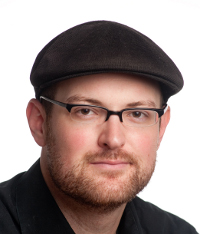|
Edward J. Vigmond, PhD
President
|
Edward Vigmond received his B.A.Sc. in Electrical and Computer Engineering from the University of Toronto, from which he also received his M.A.Sc. and Ph.D. in the Institute of Biomedical & Biomaterials Engineering. He was a post-doctoral fellow at the University of Montreal and Tulane University. Presently, he is an associate professor at the University of Calgary in the Department of Electrical & Computer Engineering, and is Director of the Center for Bioengineering Research and Education in the Schulich School of Engineering. His research interests include biomedical signal processing, scientific computing with particular emphasis on the bidomain equations, and multiphysics, multiscale modelling of the cardiovascular system.
|
|
Natalia A. Trayanova, PhD
Chief Scientific Officer
|
Natalia Trayanova, PhD, is a Professor in the Department of Biomedical Engineering and the Institute for Computational Medicine, Johns Hopkins University, Baltimore, MD. Her current research interests include understanding the normal and pathological electromechanical behavior of the heart, with emphasis on translation of basic science mechanistic insight into the clinical practice. Specifically, her research focuses on the mechanisms for cardiac arrhythmogenesis and defibrillation, as well as on advancements in ventricular ablation and cardiac resynchronization therapy. Prof. Trayanova is the recipient of numerous awards, including the Excellence in Research and Scholarship Award (2005) and the Outstanding Researcher Award (2002) from Tulane University, and the Fulbright Distinguished Research Award (2002). She was the Vice Chair (in 2007) and the Chair (in 2009) of the Gordon Research Conference on Cardiac Arrhythmia Mechanisms. She has authored or coauthored extensively, and has presented papers at a large number of international meetings.
|
|
Gernot Plank, PhD
Chief Technical Officer
|
Gernot Plank received the M.Sc. and Ph.D. degrees in electrical engineering from the Institute of Biomedical Engineering, Technical University of Graz, Graz, Austria, in 1996 and 2000, respectively. He is currently an Assistant Professor at the Institute of Biophysics, Medical University of Graz, Graz. He is also an Academic Fellow with the Computational Biology Group, University of Oxford, Oxford, U.K. He was a Postdoctoral Fellow with the Technical University of Valencia, Spain (2000–2002) and the University of Calgary, Calgary, AB, Canada (2003). He was a Marie Curie Fellow with the Johns Hopkins University (2006–2008). His current research interests include computational modeling of cardiac bioelectric activity — especially numerical methods and parallel computing techniques for the cardiac bidomain, microscopic mapping of the cardiac electric field, and defibrillation.
|
 |
Brock M. Tice, PhD
Vice President of Operations
|
Brock Tice received the Ph.D. degree in Biomedical Engineering from Johns Hopkins University, Baltimore, MD in 2009. He has been a Linux and UNIX user since 2000, and has extensive experience in building and maintaining Linux workstations, servers, and high-performance clusters. Brock’s doctoral research involved the creation and use of high-resolution computational models of the heart, with both structural and electrophysiological heterogeneities, and produced mechanistic insight into the initiation, sustenance, and termination of re-entrant arrhythmias. He is particularly interested in the development of novel, low-voltage defibrillation techniques.
|
|
Robert C. Blake III, MCS
Vice President of Technology
|
Robert Blake received his M.C.S. degree in Computer Science from the University of Illinois Urbana Champaign in 2010, where he specialized in numerical analysis and parallel algorithms. He has over 10 years of experience in numerical software development and over 6 years of experience in cardiac modeling. Recently, he has developed parallel FEA programs to simulate the equations governing electrical propagation in cardiac tissue, and he has invented a compiler that can convert high-level descriptions of cellular membrane kinetics into optimized code. He is interested in improving the usability and numerical methods of scientific software.
|

